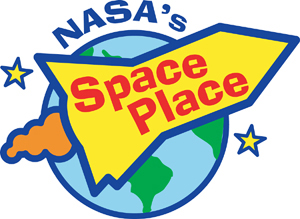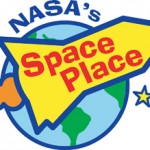As Earth speeds along in its annual journey around the Sun, it consistently overtakes the slower-orbiting outer planets, while the inner worlds catch up to and pass Earth periodically. Sometime after an outer world—particularly a slow-moving gas giant—gets passed by Earth, it appears to migrate closer and closer to the Sun, eventually appearing to slip behind it from our perspective. If you’ve been watching Jupiter this year, it’s been doing exactly that, moving consistently from east to west and closer to the Sun ever since May 9th.
Author Archives: wpadmin
Hubble’s bubble lights up the interstellar rubble
When isolated stars like our Sun reach the end of their lives, they’re expected to blow off their outer layers in a roughly spherical configuration: a planetary nebula. But the most spectacular bubbles don’t come from gas-and-plasma getting expelled into otherwise empty space, but from young, hot stars whose radiation pushes against the gaseous nebulae in which they were born. While most of our Sun’s energy is found in the visible part of the spectrum, more massive stars burn at hotter temperatures, producing more ionizing, ultraviolet light, and also at higher luminosities. A star some 40-45 times the mass of the Sun, for example, might emit energy at a rate hundreds of thousands of times as great as our own star.
NOAA’s Joint Polar Satellite System (JPSS) to revolutionize Earth-watching
If you want to collect data with a variety of instruments over an entire planet as quickly as possible, there are two trade-offs you have to consider: how far away you are from the world in question, and what orientation and direction you choose to orbit it. For a single satellite, the best of all worlds comes from a low-Earth polar orbit, which does all of the following:
Hubble Shatters The Cosmic Record For Most Distant Galaxy
The farther away you look in the distant universe, the harder it is to see what’s out there. This isn’t simply because more distant objects appear fainter, although that’s true. It isn’t because the universe is expanding, and so the light has farther to go before it reaches you, although that’s true, too. The reality is that if you built the largest optical telescope you could imagine — even one that was the size of an entire planet — you still wouldn’t see the new cosmic record-holder that Hubble just discovered: galaxy GN-z11, whose light traveled for 13.4 billion years, or 97% the age of the universe, before finally reaching our eyes.
Measure the Moon’s Size and Distance During the Next Lunar Eclipse
The moon represents perhaps the first great paradox of the night sky in all of human history. While its angular size is easy to measure with the unaided eye from any location on Earth, ranging from 29.38 arc-minutes (0.4897°) to 33.53 arc-minutes (0.5588°) as it orbits our world in an ellipse, that doesn’t tell us its physical size. From its angular size alone, the moon could just as easily be close and small as it could be distant and enormous.
Solar Wind Creates—and Whips—a Magnetic Tail Around Earth
As Earth spins on its axis, our planet’s interior spins as well. Deep inside our world, Earth’s metal-rich core produces a magnetic field that spans the entire globe, with the magnetic poles offset only slightly from our rotational axis. If you fly up to great distances, well above Earth’s surface, you’ll find that this magnetic web, called the magnetosphere, is no longer spherical. It not only bends away from the direction of the sun at high altitudes, but it exhibits some very strange features, all thanks to the effects of our parent star.
On The Brightness Of Venus
Throughout the past few months, Venus and Jupiter have been consistently the brightest two objects visible in the night sky (besides the moon) appearing in the west shortly after sunset. Jupiter is the largest and most massive planet in the solar system, yet Venus is the planet that comes closest to our world. On June 30th, Venus and Jupiter made their closest approach to one another as seen from Earth—a conjunction—coming within just 0.4° of one another, making this the closest conjunction of these two worlds in over 2,000 years.
No Surprise! Earth’s Strongest Gravity Lies Atop The Highest Mountains
Put more mass beneath your feet and feel the downward acceleration due to gravity increase. Newton’s law of universal gravitation may have been superseded by Einstein’s, but it still describes the gravitational force and acceleration here on Earth to remarkable precision. The acceleration you experience is directly proportional to the amount of mass you “see,” but inversely proportional to the distance from you to that mass squared.
The “G” in GOES Is What Makes It Go
Going up into space is the best way to view the universe, eliminating all the distortionary effects of weather, clouds, temperature variations and the atmosphere’s airflow all in one swoop. It’s also the best way, so long as you’re up at high enough altitudes, to view an entire 50 percent of Earth all at once. And if you place your observatory at just the right location, you can observe the same hemisphere of Earth continuously, tracking the changes and behavior of our atmosphere for many years.
Building the Maxx Rack Rocket
William Orvis, LUNAR#309
After building the MicroMaxx Rack rocket couple of years ago, I decided to go in the other direction. C engine rack rockets are pretty standard and D engine racks have also been done, so, it seems like it is time for an E-engine rack rocket. E12-0 engines had just come available and are just the just the ticket for a rack.
Figure 1. The Rack Rocket Fleet: MicroMaxx, 18mm (C-motor), and Maxx (E-motor).



